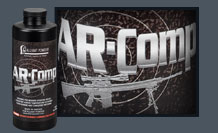Handgun Load Safety
Handloading Precautions
Most pistols and revolvers function best when loaded with a quick-burning powder such as Bullseye. Since peak pressure is reached very quickly, the SEATING DEPTH of the bullet is very important; the deeper the bullet, the higher the pressure. If the bullet is seated too deeply, dangerous pressures will be generated, which could burst the gun and cause severe personal injury (including death).
Equally critical is the powder charge. Guard AGAINST multiple charges when reloading. Certain cartridges (notably .38 Special) have been reloaded accidentally with double and even triple charges, with catastrophic results when fired in the gun.
A. Prevent deeply seated bullets.
- Your assembled cartridges must be as long as, or longer than, the minimum length listed for the combination you are reloading.
- Set your bullet station accordingly and lock tool securely.
- Keep bullet station clean of accumulating lead and grease.
- Inspect all loaded rounds for overall length.
- Be sure every bullet is held tightly by shell mouth, especially pistol loads (recoil drives magazine against bullet noses of contained cartridges).
B. Prevent multiple charges.
- Handloading: Keep track of every powder charge, then look inside all shells and compare powder levels.
- Progressive reloading: Be sure every shell is truly empty; don't back up the turret; don't jiggle the handle; don't use a shell to clean out the powder train (use a paper cup or equivalent).
C. Inspection.
- Discard cases with split mouths.
- Discard cases with enlarged primer pockets.
- Do not use cases that are designed for primer-propelled practice cartridges;
- such cases may not be designed for full power loads.
- Physical Effect of Gun Recoil (Kick)
The rearward motion of every gun, its recoil, increases when heavier shot or heavier bullets are fired, and when higher velocity loads are fired. This motion must be opposed by the shoulder, or the pistol hand, of the shooter. Whenever the recoil is perceptibly annoying to the shooter, accuracy on succeeding firings, undoubtedly diminishes.
When the shooting condition demands heavy loads and high velocity, recoil kick can be reduced by using a heavier gun, and by spreading the force over a larger area of the anatomy, such as by using a wider stock, larger grip, plus shoulder pad or softer grip.
Excellent publications available to the reloader, plus his or her own grown sophistication, have generated a wholesome trend away from maximum loads and toward accuracy of loads no more powerful than needed to accomplish the particular shot. Reducing recoil increases accuracy.
Contributing to increased accuracy as well as the pleasantness of shooting is in two main areas:
- This Reloaders' Guide includes many reduced loads.
- Our research indicates that the burning rate of powders has a modest effect on recoil.
For example, whenever two or more powders are listed for the same load, the slower one usually is chosen by the expert shooter as giving milder felt recoil. An intriguing aspect of reloading at home is the freedom to assemble, for example, trap loads with Red Dot or Green Dot powder, then to shoot them alternately to decide which seems more comfortable.
Additional Handloading Precautions
- Understand what you are doing and why. Read handbooks and manuals on reloading. Talk to experienced reloaders. Write or call suppliers of components if you have questions or are in doubt.
- Stay alert when reloading. Do not reload when distracted.
- Establish a loading procedure and follow it. Do not vary your sequence of operations.
- Examine empty cases (shotshell or metallic) be sure they are in good condition before reloading. Never force live cartridges into or out of the chamber of a gun.
- Do not use cases that are designed for primer-propelled practice cartridges; such cases may not be designed for full power loads.
- Do not ream out or enlarge flash holes of metallic cartridge cases. This may change the ignition rate and result in dangerous pressures.
- Do not punch out live primers. Fire the empty primed shells in a gun.
- Do not mix primers. Primers differ in brisance of ignition, which affects pressure and velocity. Use only the primer listed.
- The shotshell loading data in the Reloaders' Guide are for LEAD SHOT only. Do Not use steel shot.
- One-piece plastic wads for shotshells vary compressibility and gas-sealing effectiveness. Use only the wad listed.
- If you "throw," or measure powder charges by volume, check-weigh the charge frequently. Do not mix powders.
- Do not use powders near a flame, spark-producing machinery, or heating device. Do not expose powders to temperatures above 100ºF.
- Keep out of reach of children.
- Do not smoke while reloading.

AR-Comp – Your Dedicated AR Powder
Engineering for fast cycling, high-volume semi-automatic rifles. Learn more »
Learn to Reload
Interested in learning how to reload your own ammunition? Get started now »
